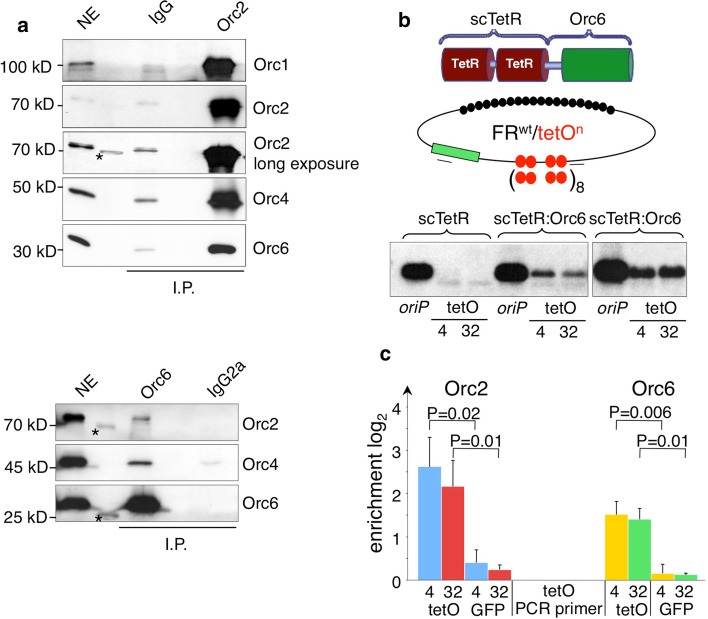Fig. 1.
Orc6 is part of the ORC holocomplex and mediates replication competence. a Co-immunoprecipitation experiments with HeLa nuclear extracts were performed with the indicated antibodies. Immunoblot analysis confirmed the co-precipitation of ORC subunits. For comparison 0.5% of the input material (NE) is shown. The asterisks mark an unspecific interaction of the antibody with the protein marker. b Schematics of the single-chain tetracycline repressor Orc6 fusion protein (scTetR:Orc6) and the reporter plasmids. The four or 32 tet-operator (tetO) sites are illustrated as red circles and the EBNA1 binding sites within the nuclear retention element FR as black circles. An oriP control plasmid and the reporter plasmids were transfected into HEK293 EBNA1+/scTetR:Orc6+ cells, selected and assessed for their replication competence by Southern blotting. Two independent experiments are shown. c ChIP analysis of HEK293 EBNA1+/scTetR:Orc6+ carrying either FRwttetO4 or FRwttetO32 plasmid DNAs indicated the site-specific recruitment of the Orc2 subunit via scTetR:Orc6. The locations of the primer pairs are indicated by black bars in (b). The GFP gene (green rectangle) served as a reference site and is located 3.5 kbp from the tetO cluster. The histogram indicates the relative enrichment values and standard deviations of three independent experiments on a logarithmic scale expressed as difference between PCR values (Cp) obtained with the Orc6 and Orc2 specific antibodies versus controls obtained with the corresponding IgG (Orc6) and pre-immune serum (Orc2). Student’s t test was used to analyze the statistical significance

